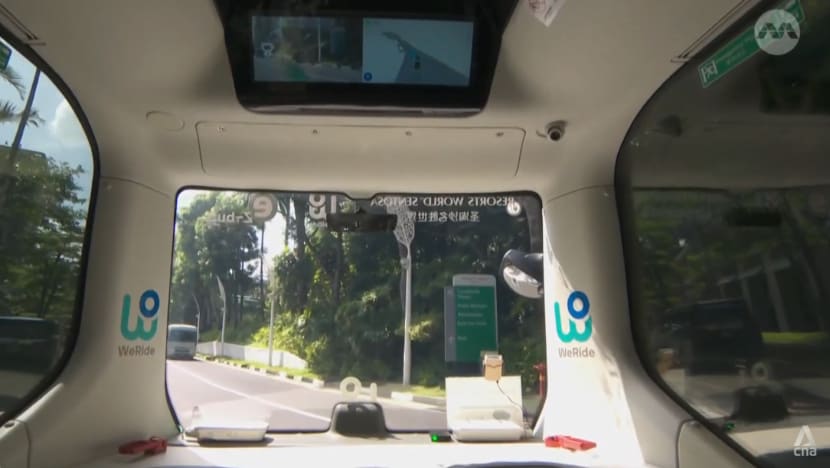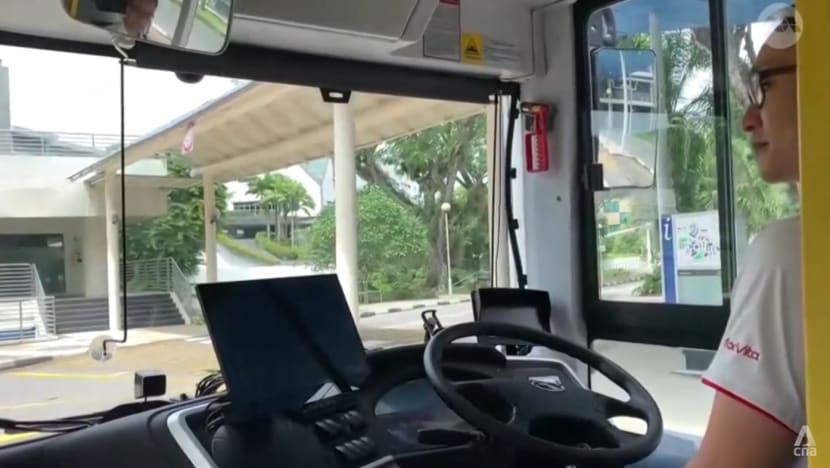Autonomous vehicle operators eye expansion amid Singapore’s driverless push
One operator noted that each vehicle must undergo multiple rounds of testing along a designated route with a safety operator on board before receiving approval for service.

A driverless shuttle bus operated by autonomous vehicle operator WeRide, at Resorts World Sentosa.

This audio is generated by an AI tool.
SINGAPORE: Several major autonomous vehicle (AV) operators in Singapore are preparing to expand their services as the country ramps up its national push for driverless public transport.
Acting Transport Minister Jeffrey Siow on Friday (Jun 27) highlighted the role AVs could play in supplementing public bus services and easing manpower constraints.
He also announced that AV trials will commence in Punggol from the fourth quarter of this year. The vehicles will operate at “manageable” speeds and with a safety officer onboard, he added.
WeRide, an AV company that has been running a shuttle service at Resorts World Sentosa for a year, currently ferries about 100 passengers daily on a 1.2km route around the island.
Its driverless bus navigates using a combination of sensors and cameras.
The vehicle is equipped with LiDAR sensors - a 3D laser scanning technology capable of detecting objects up to 200m away with near-perfect accuracy.
Its onboard cameras classify these objects into motorcyclists, cars or humans within a 100m range.
Before any vehicle is approved for deployment, it must undergo several rounds of testing along a designated route with a safety operator on board, the company said.
Mr Sebastian Yee, director of business development at WeRide (Singapore), told CNA that with AV technology rapidly progressing worldwide, regulations and frameworks require reform to speed up adoption.
“With that, we can talk about how to commercialise it together with the site owner and transport service provider … once this (is) overcome, you will see that the whole entire adoption will be much faster and smoother," he added.
Mr Yee said autonomous buses could help alleviate Singapore’s bus driver shortage.
He added that WeRide intends to offer more routes around Sentosa as well as Jurong Island in the future.
CHALLENGES IN TESTING
Another AV operator, Moovita, is also looking to expand and is calling for streamlined regulatory approvals — without compromising safety.
"We understand the rationale from the authorities in terms of testing. But … we are navigating around evolving standards and a lot of approval levels,” said Moovita’s vice president Ken Chan.
He added that currently, every vehicle needs to be tested and that will affect the timeline required for deployment.

“(If it’s) one vehicle, maybe not so bad. It may take about a few weeks or a few months. But if I have a sizeable fleet, the time taken to test every vehicle, that will be a challenge," said Mr Chan.
He noted that infrastructure such as public roads will need upgrading for AV buses to become mainstream.
Driverless buses would need dedicated lanes for them, he said, noting that it would help minimise disruption caused by erratic behaviours of other road users.
Mr Chan added: “We may encounter other (road) users … not giving (the right of way) or paying attention”.
"Some of the older road infrastructures may be challenging for AVs … due to the width of the road or the constant constructions or the traffic density - that may not be conducive for AVs to operate on,” he said.
Mr Chan noted that a reliable internet network is also important for smooth driverless operations.
Moovita currently has three driverless buses plying routes from Ngee Ann Polytechnic’s campus to King Albert Park and Clementi MRT stations with safety operators on board.
The buses carry up to 16 sitting passengers with a service frequency between 30 minutes and 45 minutes depending on traffic.








.jpg?itok=yqBbqBb4)


